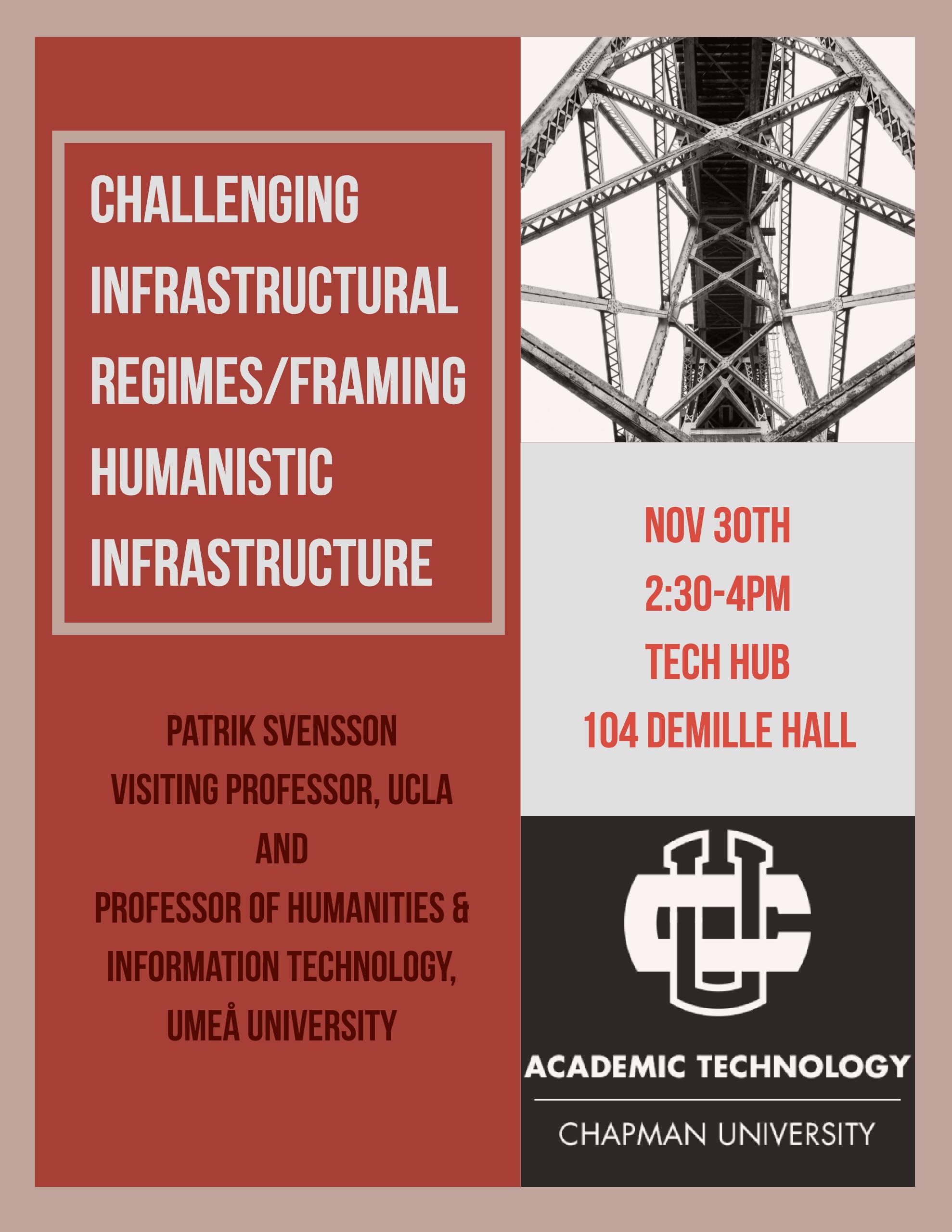Building Humanities Infrastructure with Patrik Svensson
November 10, 2017
Announcing an exciting event to be held in Chapman’s almost-completed new Tech Hub space:
 Title: Challenging Infrastructural Regimes/ Framing Humanistic Infrastructure
Title: Challenging Infrastructural Regimes/ Framing Humanistic Infrastructure
- By Patrik Svensson (bio, below)
- Time: 2:30-4 pm
- Place: The Tech Hub, DeMille Hall 104
- Sponsor: the Office of Academic Technology and Digital Scholarship
Bio for Svensson (adapted from patriksv.com):
Svensson’s scholarship focuses on the intersection of the humanities and information technology. This resulted in his building, establishing and expanding HUMlab at Umea University. Additionally, drawing on this work and extensive field studies and networking, he authored a four-part series for the Digital Humanities Quarterly (published 2009-2012): Humanities Computing as Digital Humanities, The Landscape of Digital Humanities, From Optical Fiber To Conceptual Cyberinfrastructure and Envisioning the Digital Humanities. Svensson explores the history and epistemic tradition of the field and argues in favor of seeing the digital humanities as a contact zone that supports multiple modes of engagement, different epistemic traditions and intellectual-material exploration. He developed a more comprehensive take on the field in his 2016 monograph Big Digital Humanities (University of Michigan Press). The intellectual direction of the field and the humanities is also explored collaboratively in Between Humanities and the Digital (co-edited with David Theo Goldberg, MIT Press, 2015).
Most recently, Svensson and co-author Erica Robles-Anderson were awarded the Mahoney Prize for their 2016 article “‘One Damn Slide After Another’: PowerPoint at Every Occasion for Speech” The Mahoney Prize recognizes “an outstanding article in the history of computing and information technology, broadly conceived”, and is awarded by the Special Interest Group in Computers, Information, and Society (SIGCIS, part of the Society for the History of Technology).
Svensson’s work is characterized by an interest in combined critical reflection and visionary-interventionist sentiment. For instance, his research on infrastructure is closely embedded in thinking about what humanities (and other) infrastructure could be, and through his practice, he builds infrastructure. This can be a fine balance: How do you provide critical reflection on a field at the same times as being actively involved in developing it?


